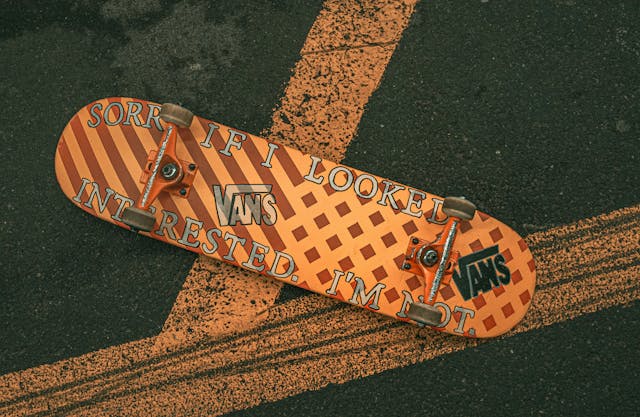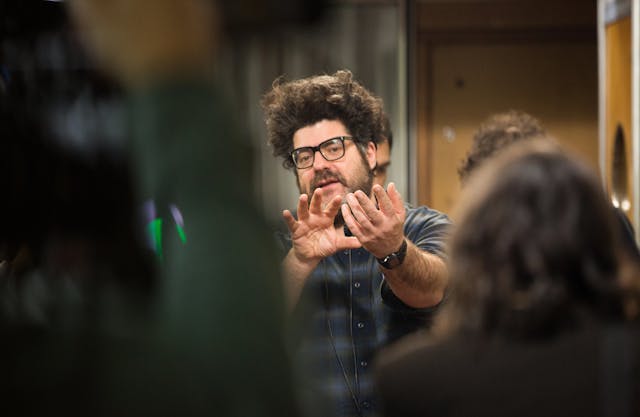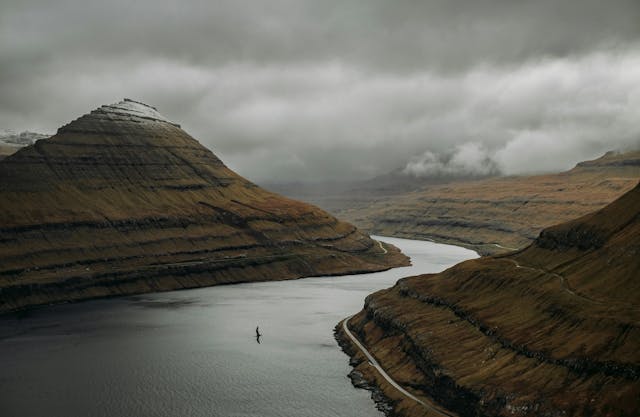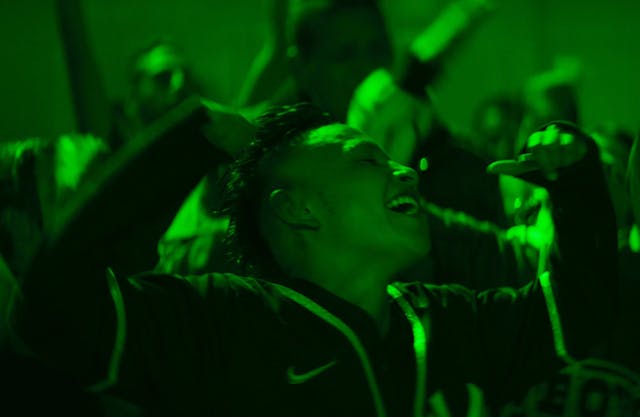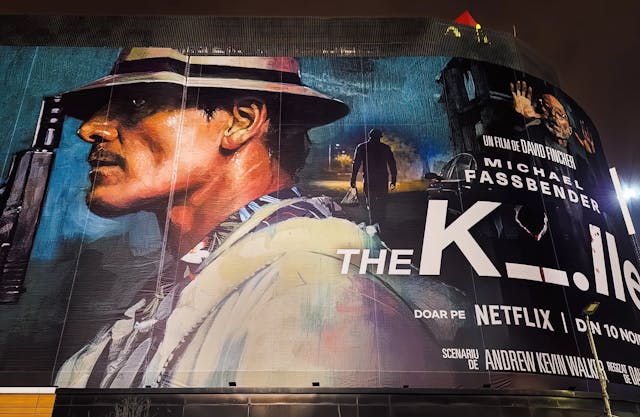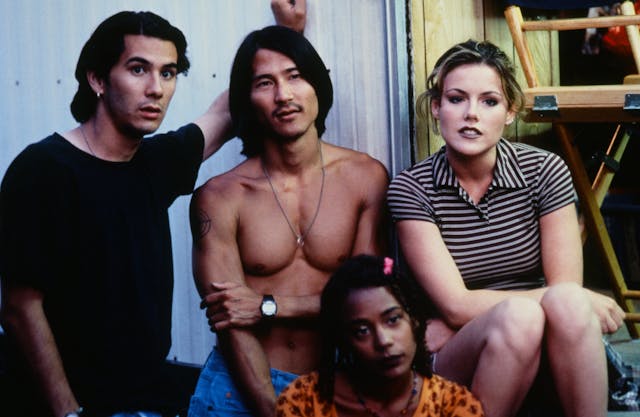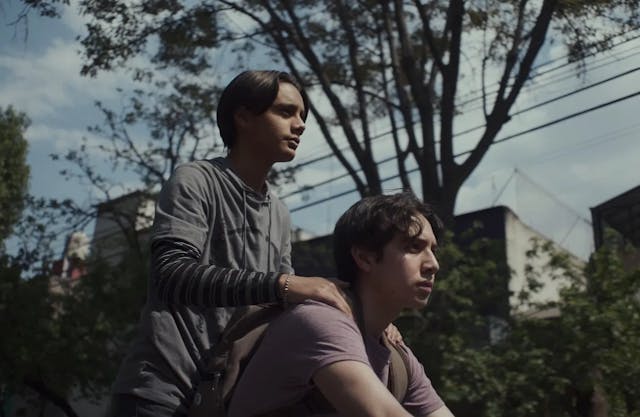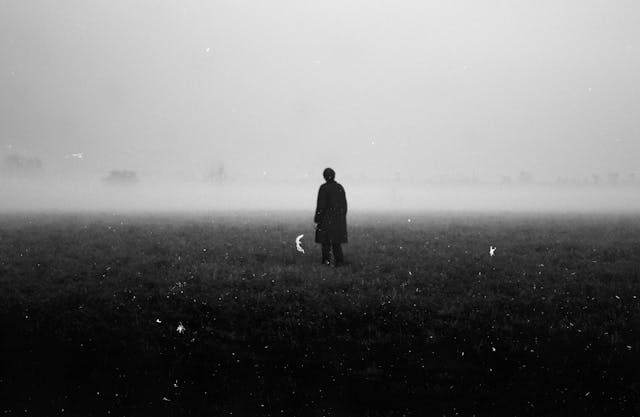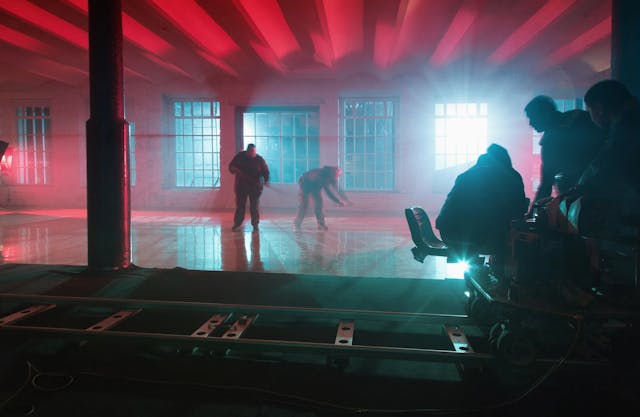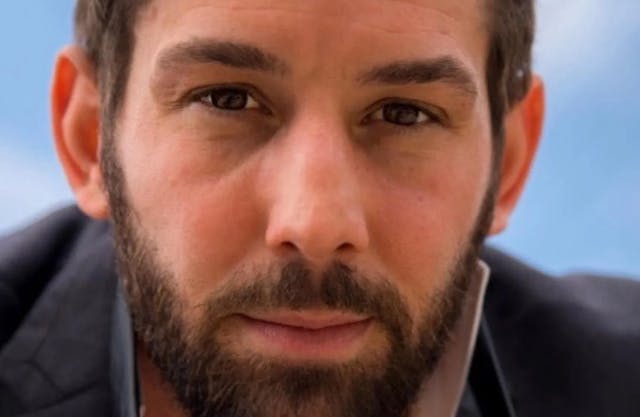"The N-Men: The Untold Story": James Sweigert's Look at the Dawn of Skateboarding.
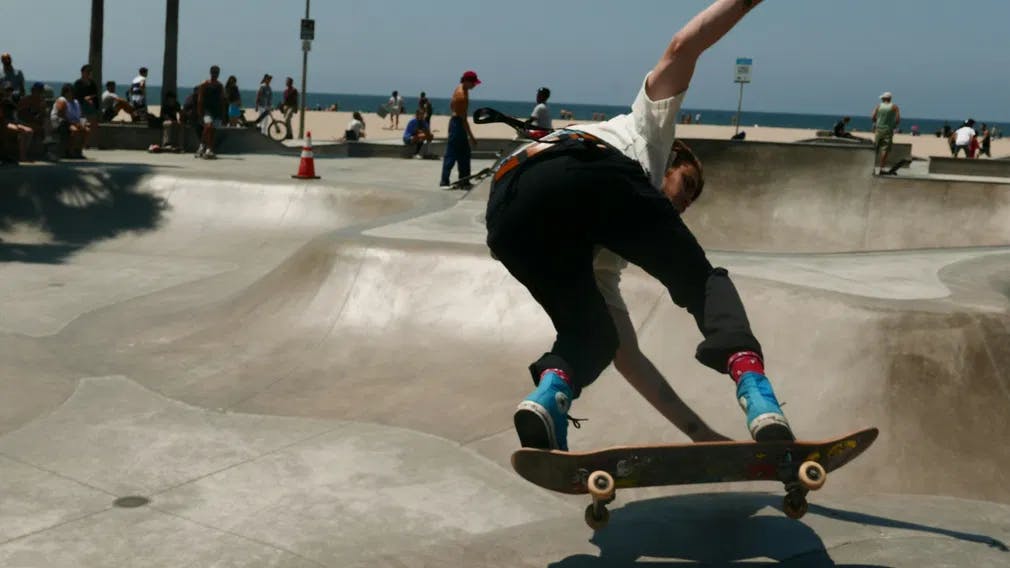
You don't have to be a skateboarder to roll with James Sewigert's "N-Men: The Untold Story." Any movie buff is also welcome in the pool, the curve, the downhill road, or wherever you want to set your wheels to roll. This fascinating documentary takes you to the birth of the primal extreme sports culture, with the story of the hallowed North California crew of badass thrill-seekers. From the early seventies to the contemporary times, you will rip, shred, and wipe out like the best of them. The movie has amazing, never-before-seen archival material and some nostalgia triggers. Check out baby Tony Hawk skating pools like a professional and his middle-aged self reflecting on where the sport is now, thanks to the elder statement of the N-Men. The celebratory tone is tempered by the cautionary tale of those who skate too close to the flame.
We caught up with director James Sweigert via Zoom from his home base in Pasadena, California, to talk about the behind-the-cameras action of his debut feature film.
Popflick: You have years of experience working in TV and film production, and now you jump to directing with The N-Men: The Untold Story. What made you take that decision?
James Sweigert: I have always loved movies. I have always loved cinema. I was always creative and telling stories when I was a young boy. All my family members were attorneys and judges, but that was not for me. I always dreamed of moving to Los Angeles and working in film and television. I came to Hollywood 30 years ago to make movies and just finished my first one! This was a passion project. One of my mentors gave me a great piece of advice. He said, 'Tell a story that only you can tell.' I looked around my life, and there were some interesting stories I could tell because I've lived an interesting life. But this one was the most compelling. I was a young skateboarder and surfer, so it is something that's near and dear to my heart. I looked at this group of friends I grew up with and saw what they had become and the global impact of skateboarding. All of that, thanks to a little wooden toy!
They had never gotten any recognition or acknowledgment except from the best professional skateboarders who came to them for mentorship and inspiration. I realized I had to tell their story. It was up to me. I was being called. The universe was begging me to tell their story. So, I set out on this journey. I've written, produced, and directed many small projects, television commercials, and that sort of thing. That's been my kind of day job for a long time. But this was about telling a story I felt only I could tell.
Popflick: It took you eleven years to make "N-Men: The Untold Story." How do you focus on such a long-term objective while dealing with your day job and producing other projects?
James Sweigert: You keep the focus because it's your dream. It's a passion project for me. There was no studio, no outside money, no sponsors. Someone said, 'You should crowdfund it to have many people help you pay for it.' I didn't want any exterior influence or input or to feel pressured by outside forces. Skateboarding is very genuine, raw, real, and honest. You can't fake that. This had to be authentic, right? Because these subjects of my film, these characters are very, very much that. They are very raw and genuine. And so I knew I had to tell the story truthfully and not hide anything. I chose to make a film about a group of people that were going to hold me accountable to finish making the film.
I worked nights and weekends with my own money. I funded the project. Those factors contributed to production taking 11 years. From the beginning, it was an interesting history, but over time, more events unfolded along the way, and they also made it into the film. We were finding the story as we were going along. We are talking about the actual 50-year history of this group of skaters. My passion kept me going, but they also urged me to continue. There are some times when you kind of run into roadblocks. You wonder, 'Do I have anything here? Is this any good?' You second guess yourself. Every creative person faces doubts, but I had a lot of good friends around me, encouraging me to finish the journey.
Popflick: You are a card-carrying member of the Sierra Wave skateboard Park. Was being an insider helpful?
James Sweigert: Absolutely. It goes back to authenticity. There are always suspicions about outsiders. And there's something to saying to somebody, "Me too, I was right there. I understand what it was like because I was there. I saw you.' There's that, and the fact that I had saved that membership card from 1978! It's funny because it's almost like the young me knew I would need that for validation. In many interviews, I would show them my membership card with a picture of myself as a young boy.
I wasn't an outsider looking in. Often, documentarians are very objective, and outside the subject, they're filming. I guess you could say my connection to this crew taints my documentary. However, I wasn't a part of the group.
Popflick: You did not start working until you got the approval of John O'Shai. Why was it so important to get his blessing?
James Sweigert: I found these guys in 2005. I saw what they had done, and I was astounded. I was like, 'Wow, somebody needs to tell this story! I think there's a documentary here,' I love documentaries. I've always wanted to make a documentary. Randy Cayton said, 'Well, you'll have to ask John.' He was the founder of the N-Men and very protective of what he referred to as a movement, this group of people whose passion is and love is skateboarding. They were still stealing a lot of pools and skating in a lot of illegal places. He didn't want me filming there and disclosing it. So, he said no in 2005. I didn't know John that well. John didn't know me. But the guys kept campaigning, saying, 'Jimmy's a good guy. He'll treat us right and do the story right.' The first thing I filmed was the interview with John O'Shai; you see it in the movie, where I got his blessing.
He finally realized that the movement had become very much public. There were men, women, children, husbands, wives, and daughters, all skateboarding. That was in 2011. And so, for 11 years, I shot and edited. All these incredible events came to occur and turned the movie into three stories I had to braid together. There was the chronology of the men in their 50-year history. Then, there were all the current events unfolding. And then, there's the story of Doug Jones and John O'Shai woven into that. The most challenging thing in postproduction was to braid those three stories together. I credit Tyler Farrow, my second editor, who helped me get this thing across the finish line.
Popflick: your movie also works as a historical capsule of California in the 70s and the 80s. You amassed a treasure trove of archival material, especially Bill Goldin's photographs. How did you manage all that information?
James Sweigert: It was very challenging. I was not that brilliant because I set out to make a documentary without any documentation! What I wanted was to tell the story. Only after I started, Randy and all the guys kept telling me, 'There's tons of footage! There's tons of photos!' When the time to use them came, they were like, 'We can't find anything!' I'm like, 'Wait, what, guys?' There were just a few photographs, but they had mentioned this photographer from back in the day. And so we went on a search. We even had a private investigator trying to find him! It was like "Finding Vivian Maier"! - it's a 2013 documentary by John Maloof and Charlie Siskel about a New York nanny who was revealed to be a great photographer after her death -. We found Bill and asked if he had any of the photographs. And he's like, 'I have them all. They've been sitting in a box for 30 years!'
His son Mike Williams skated with the guys. At that time, Bill was a hobby photographer and took those pictures for fun, but he was brilliant. He was happy to give us all the photos because the world would get to see his work. We pulled the best ones out, but there were probably other 500 photos that we could have used. There are hundreds in the film. I wouldn't have had a documentary if it wasn't for Bill.
Bill was getting very sick. He was very elderly and had lost a leg from diabetes. We edited together his segment in the film and shared it with him. He was moved to tears. He passed away while we were still editing the movie, but he got to see a rough cut, so he knew his photos would live perpetually. That made me really, really happy. It was my gift to Bill, a 'thank you' for sharing these incredible photographs. His son Michael brought all the kids and grandkids to the premiere in Sacramento. It was wonderful for them to see their father's impact on the skateboarding culture.
Popflick: The dramatic backbone of your movie is the relationship between John O'Shai and Doug Jones. Without spoiling the movie…it must have been difficult to handle the story's turns. Is that a situation in which a documentarist should have a distance from the subjects?
James Sweigert: I had an internal struggle with how and what I filmed and how to include in the film. It was very challenging. We did many test screenings and asked people, 'How does this land for you?' This unexpected twist at the end of the film was one of the reasons why Josh Brolin got involved in the project. He gave his voice to the film and became an executive producer. He said he loved being associated with a movie as humane as this. I don't think anybody with a heart and soul could remain completely impartial to these events. A lot of skateboard films are pure action. 'Look how cool this guy is! Look at this guy doing the best trick and the highest Ollie off the stairs!' There's some of that here, but it's a human film. It's a story about people. It's a family story. It's a story about a tribe, its importance, and the connectivity that we all need to be fulfilled as human beings.
Popflick: Some viewers might feel they're not getting the full story by leaving some details out. Is it correct to say your priority was to protect your subjects? Not to expose people who are in a very vulnerable state?
James Sweigert: Yes. And that's a that's a very astute observation. Many of the questions at the Q and A's concentrated on what happened to this character. I wasn't going to put it myself in the film, but it became clear on several of the screenings that it was necessary to clarify who are these guys, who I was, and why I was telling the story. I used a resource from "Icarus" (Brian Fogle, 2017), the documentary about the Russian doping scandal. I put myself in the film to say, 'Here's who I am, here's why I'm telling this story. These were acquaintances of mine, and I did know them through this time.' But it is also through my perspective. It is through my lens. And when this twist happens at the film's end, it's very unexpected and emotional.
I wanted to be respectful to the family. I tried to navigate that carefully, so I ran it by people. Do we give all the information? What do we give? And it was like, 'Well, what did you know?' Because it's from my perspective. I share what I heard through that one character and what he discloses in the film. I have a great writing mentor, Peter Dunne. He's a professor of Film and Television at UCLA. He said, 'We don't need to know why that happened. We don't need to know the how.' I've said to several people who've asked these questions: 'Watch the film again because that character does a lot of projecting.' When he talks about other people, he's talking about himself. And when you watch the movie through that filter, it has an entirely new meaning. It's a self-fulfilling prophecy, in essence, and.
Popflick: In a way, the images do the talking. At the Slalom event, the physical change is very telling.
James Sweigert: That was one of the hardest scenes to edit. There was a two-year time jump from our previous encounter. The physical transformation was so vast. I did not recognize that person when I sat down to interview them. It was jaw-dropping. We had to edit and re-edit differently because people would say, 'Wait a minute, that was that guy?' It's almost like two completely different people in the film, making people scratch their heads and wonder, rewind, or watch it again to understand truly. But you heard this person speaking about this lifestyle, how skateboarding is for outsiders, outlaws, and loners that formed a group of loners. 'We love to do drugs and drink and get off and fight.' There's a lot of projection in the film. We see how that plays for some people, not all, but some people who choose that lifestyle. It attracts the thrill-seekers and the outlaws. We've all known them growing up. I was one for a while, but I grew up right and matured, and luckily, I could get out of my way. Most do that, but some people aren't so lucky.
Popflick: How do you feel about the finished movie? Is it what you expected?
James Sweigert: It's ten times better than what I expected. As a creative and as an artist, you surrender yourself to the process. Whether you're making a scripted film or a documentary, you surrender yourself to it because you don't know what you'll find. You have to be open to the fact that this story might continue to unfold, or you might discover things you weren't expecting, and you have to figure a way through them.
In 2012, right after I started filming, one of the members of the N-Men was killed in an avalanche snowboarding. He used to design the trophies for the award show and was a beloved group member. There was some footage of him, and we actually cut together a little story about him because I wanted to show how they push themselves to the limit physically and how their lives are on the line while they do it. But I just didn't have room for that. There wasn't enough footage to get familiar with him and feel the loss.
I had great mentoring. They told me to listen to the whispers, to my intuition. There's some stuff where we talk about the youth and all this beautiful stuff they're doing for disabled kids, taking them skateboarding. I thought that was going to be the uplifting, happy ending. I love Frank Capra, so I wanted to make you feel good when you finish the film. But that's not the way the film goes, you know. We edited it a couple of different ways. I tried the happy ending. My mentor and editor said, 'Nope, that's not it.' My mentor said, ' The reason you keep that in is because that is how you make the audience feel the love this family has for one another. You make the audience feel the love.' And that's all I needed to hear. I said, 'I don't want to shock anybody, but I want to move people.' These are motion pictures. And we make a motion. We make pictures that move not only physically and visually but emotionally.
Popflick: What would be your advice for young filmmakers planning on making indie movies?
You don't always know what you'll create once you set out to create. One of my friends said, 'Just start shooting.' you know. If you have a subject you're interested in and are passionate about, just start shooting because you have no idea what you will end up with.
Popflick: What are you working on? Are you going to keep directing?
James Sweigert: I had an uncle who passed away. His name was Jack Swanson. He was a very famous horse whisperer and incredible Western artist, a painter and sculptor of the Wild West. He used to paint wild horses, cattle, and vaqueros from early California before we were part of the United States. Many celebrities collected his paintings and his bronze sculptures. Sam Elliott and he were very good friends. He did the eulogy at my uncle's funeral. No one has told his story in a film yet, so that's something that I'm kicking around. I shot footage of him when he was alive in hopes of doing a documentary, and there's other existing footage. It would be quite an undertaking, another big project. But I will need financial help since I spent all my money on the first one!
Popflick: Let's secure Sam Elliott for the voiceover!
James Sweigert: He's already agreed to it!
Want to get an email when we publish new content?
Subscribe today